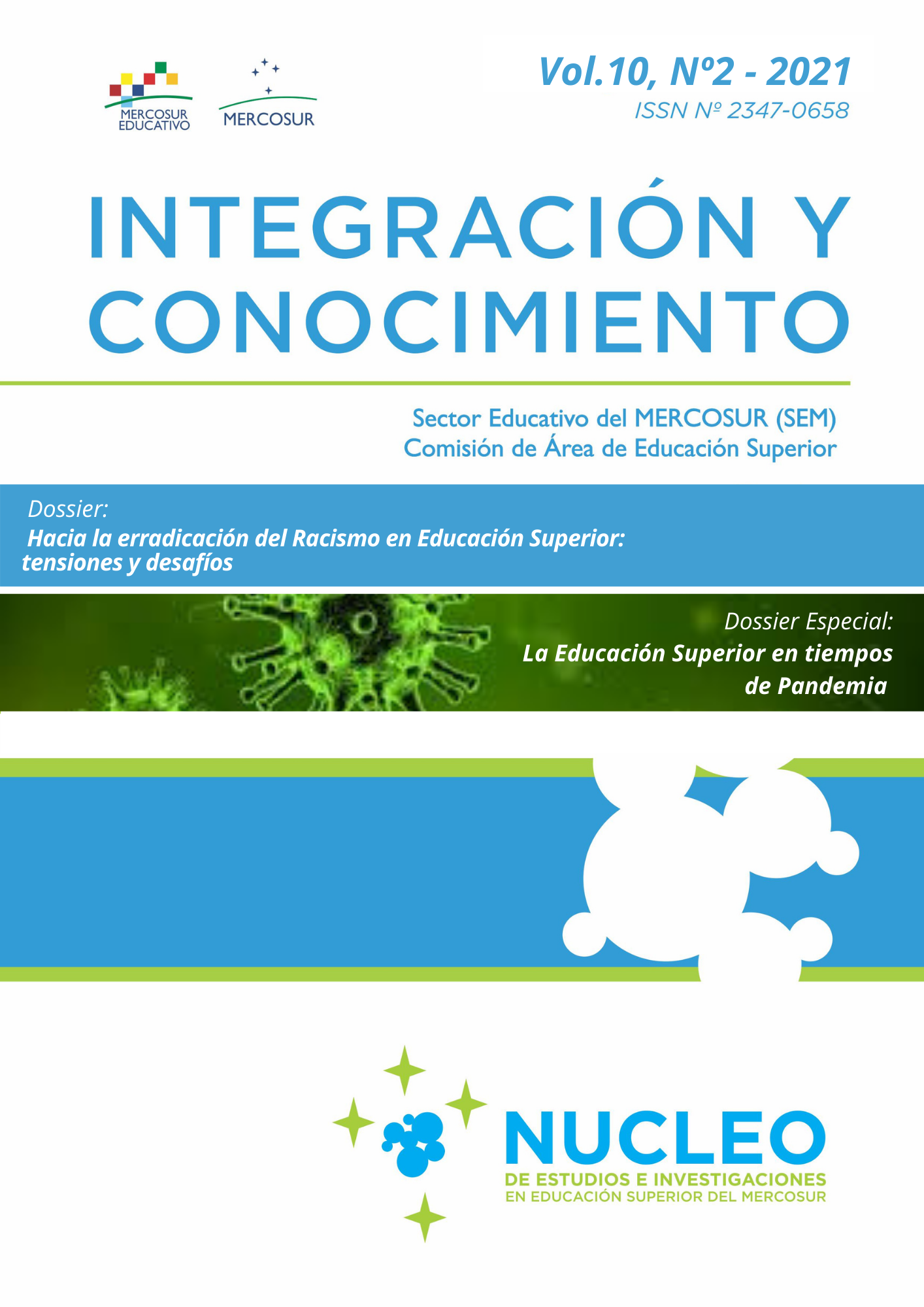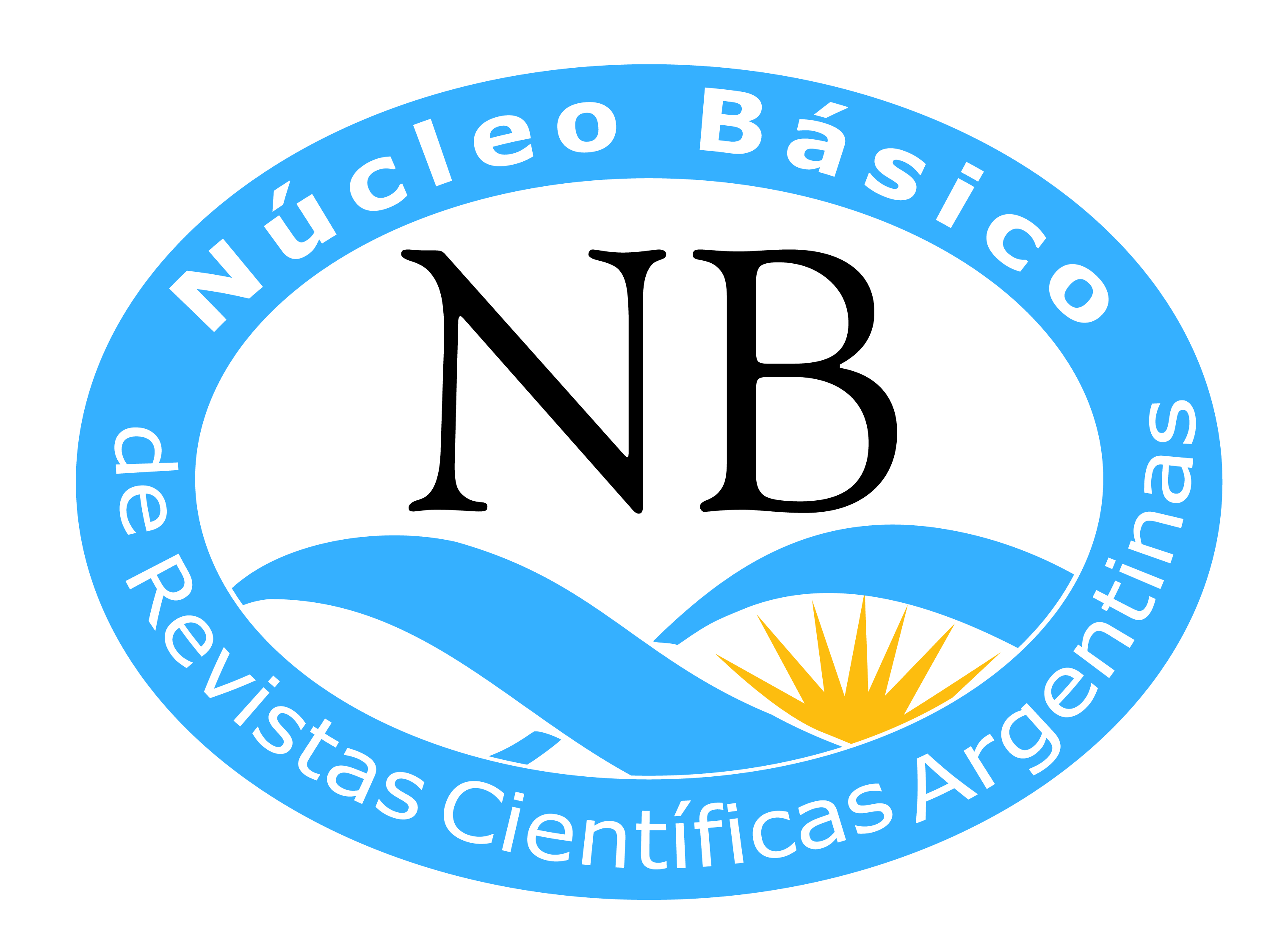Teaching at university. Pandemic... and the day after
DOI:
https://doi.org/10.61203/2347-0658.v10.n2.34097Abstract
The work is framed in the perspective called live didactics that seeks to alter the classical approaches in teaching practices from a process of reinvention that begins with the recognition of cultural trends. This framework is brought into play in the analysis of the process of acceleration of digitalization that occurred in universities after the closure of physical buildings and the suspension of face-to-face classes due to the Covid-19 pandemic. Phases that took place in 2020 and the consolidation of some pedagogical-didactic features in 2021 are identified. In the understanding that the alteration of certain conditions instituted as an effect of the pandemic are not giving rise to redesign processes focused on contemporary modes of knowledge construction, some dimensions are introduced to imagine contemporary, relevant and inclusive teaching practices as part of the University that emerge from the crisis as an engine of creation and social transformation.
Downloads
References
Baricco, A. (2019). The Game. Buenos Aires, Argentina: Anagrama.
Berardi, F. (2020). El umbral. Crónicas y meditaciones. Buenos Aires, Argentina: Tinta Limón Ediciones.
Brynjolfsson, E. y McAfee, A. (2016). La segunda era de las máquinas: trabajo, progreso y prosperidad en una época de brillantes tecnologías. Buenos Aires: Temas.
Carrión, (2020). La estética de la pandemia. The New York Times. Recuperado de https://nyti.ms/3epAuhO
Carrión, J. (2020b). Lo viral. Barcelona, España: Galaxia Gutenberg.
De Alba, A. (2020). Currículo y operación pedagógica en tiempos de COVID-19. Futuro incierto. En H. Casanova Cardiel (Coord.), Educación y pandemia: una visión académica (pp. 289-294). Ciudad de México: Universidad Nacional Autónoma de México, Instituto de Investigaciones sobre la Universidad y la Educación.
IESALC, UNESCO (2020). COVID-19 y educación superior: De los efectos inmediatos al día después. Análisis de impactos, respuestas políticas y recomendaciones. Caracas, Venezuela: IESALC.
Lévy, P. (2004). Inteligencia colectiva: por una antropología del ciberespacio. Washington D.C., Estados Unidos: Organización Panamericana de la Salud.
Lion, C. y Maggio, M. (2019). Desafíos para la enseñanza universitaria en los escenarios digitales contemporáneos. Cuadernos de Investigación Educativa. 10 (1), 13-25.
Litwin, E. (1994). Temas en debate en torno a la educación a distancia en las universidades públicas argentinas. En E. Litwin, M. Maggio y H. Roig. Educación a distancia en los 90. Desarrollos, problemas y perspectivas (pp. 163-168). Buenos Aires, Argentina: Universidad de Buenos Aires.
Maggio, M. (2012). Enriquecer la enseñanza. Buenos Aires, Argentina: Paidós.
Maggio, M. (2013). Sobre cómo la educación a distancia puede ayudarnos a re-concebir la educación superior. Educ.ar. Recuperado de https://cdn.educ.ar/repositorio/Download/file?file_id=60bf290d-b46c-4edf-aadd-cd555f59f7e0
Maggio, M. (2018). Reinventar la clase en la universidad. Buenos Aires, Argentina: Paidós.
Maggio, M. (2020). Las prácticas de la enseñanza universitarias en la pandemia: de la conmoción a la mutación. Campus Virtuales, 9 (2), 113-122.
Maggio, M. (2021). Educación en pandemia. Buenos Aires, Argentina: Paidós.
Perkins, D. (1995). La escuela inteligente. Madrid, España: Gedisa.
Rose, F. (2011). The Art of Immersion: How the Digital Generation Is Remaking Hollywood, Madison Avenue, and the Way We Tell Stories. Nueva York, Estados Unidos: W. W. Norton & Company.
Serres, M. (2013). Pulgarcita. Buenos Aires, Argentina: Fondo de Cultura Económica.
Downloads
Published
Issue
Section
License

This work is licensed under a Creative Commons Attribution-NonCommercial-ShareAlike 4.0 International License.
Authors who have publications with this journal accept the following terms:
a. Authors shall retain their copyright and guarantee the journal the right of first publication of their work, which shall simultaneously be subject to the Creative Commons License of Recognition which allows third parties to share the work as long as its author is indicated and its first publication is this journal.
b. Authors may adopt other non-exclusive licensing agreements for the distribution of the published version of the work (e.g., depositing it in an institutional telematic archive or publishing it in a monographic volume) provided that the initial publication in this journal is indicated.
c. Authors are allowed and encouraged to disseminate their work via the Internet (e.g. in institutional telematic archives or on their website) after publication of the article, which may lead to interesting exchanges and increased citations of the published work. (See The Effect of Open Access).



